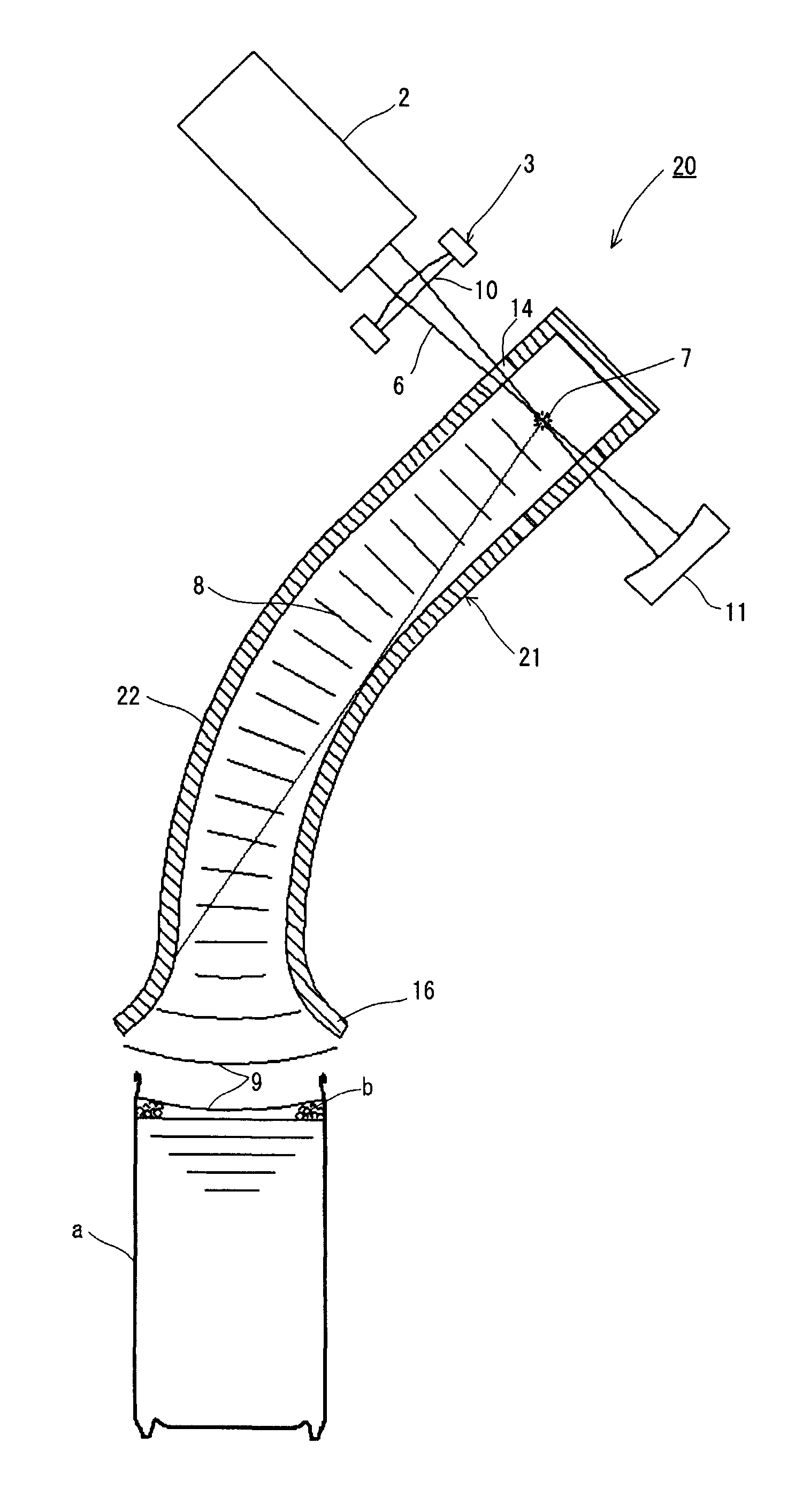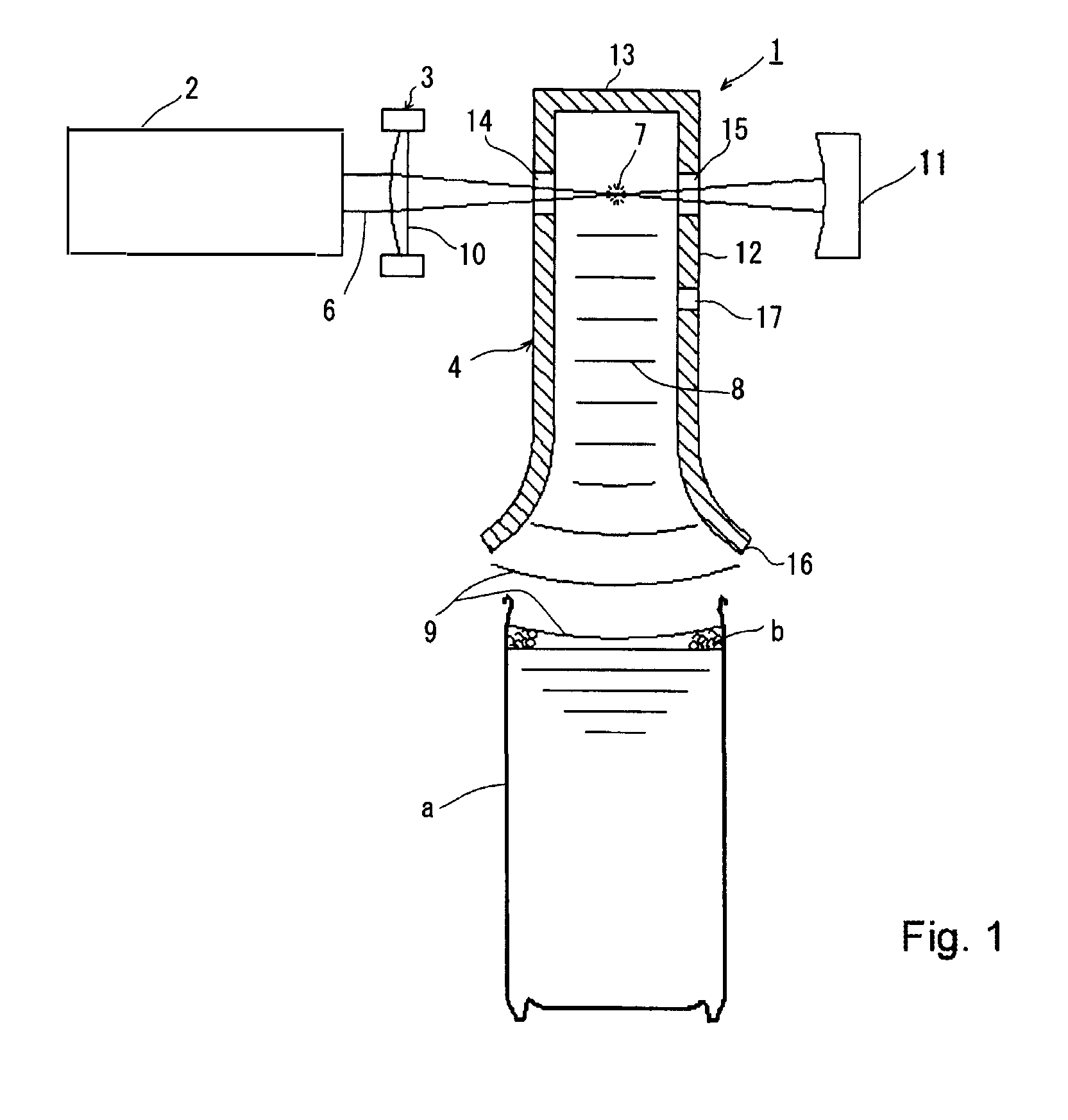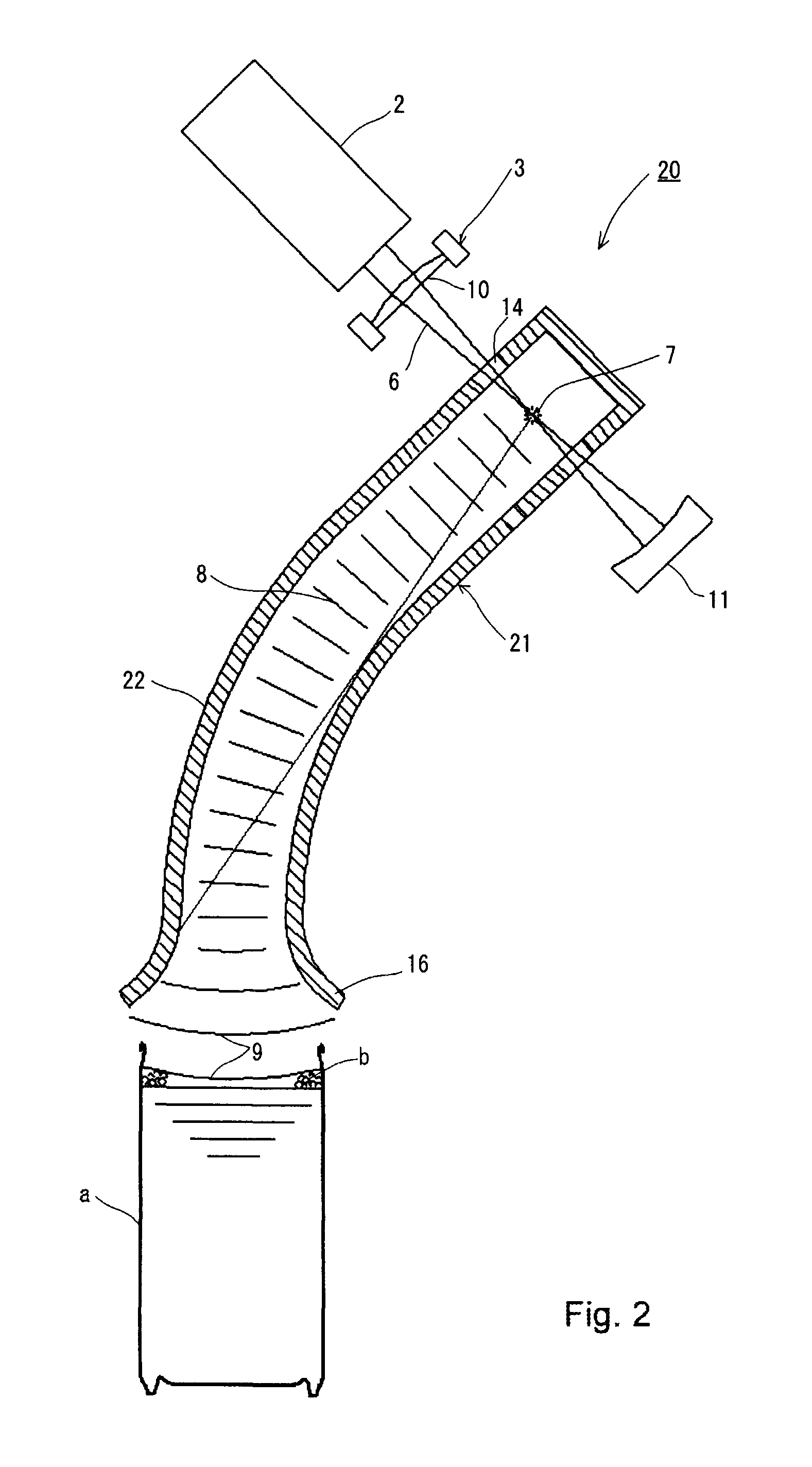Defoaming method and device
a defoaming device and foaming technology, applied in mechanical vibration separation, other chemical processes, separation processes, etc., can solve the problems of insufficient available time to destroy foam, difficult to reduce the amount of oxygen in the head space, and foam remains during sealing, so as to improve the energy utilization efficiency, reduce the content to be affected by high-power lasers, and reduce the effect of oxidation
- Summary
- Abstract
- Description
- Claims
- Application Information
AI Technical Summary
Benefits of technology
Problems solved by technology
Method used
Image
Examples
Embodiment Construction
[0058]In a defoaming method according to the present embodiment, a pulsed laser beam is condensed and irradiated onto an internal space of an acoustic waveguide so as to generate pulsed sound waves from an illumination point as a sound source, and foam outside an open end of the acoustic waveguide is destroyed by the pulsed sound waves propagating through the acoustic waveguide, and FIG. 1 schematically illustrates the basic structure of defoaming principle of the defoaming method.
[0059]In FIG. 1, the reference numeral 1 stands for a defoaming device according to this embodiment, which comprises a pulsed laser beam oscillation device 2 that generates a pulsed light beam, a condensing optical system 3 that condenses the pulsed laser beam oscillated by the pulsed laser beam oscillation device, and an acoustic waveguide 4, and in this configuration, an open end 16 of the acoustic waveguide is located above the liquid surface of a defoaming object facing the liquid surface in the vertic...
PUM
| Property | Measurement | Unit |
|---|---|---|
| acoustic impedance | aaaaa | aaaaa |
| volume | aaaaa | aaaaa |
| concentration | aaaaa | aaaaa |
Abstract
Description
Claims
Application Information
 Login to View More
Login to View More - R&D
- Intellectual Property
- Life Sciences
- Materials
- Tech Scout
- Unparalleled Data Quality
- Higher Quality Content
- 60% Fewer Hallucinations
Browse by: Latest US Patents, China's latest patents, Technical Efficacy Thesaurus, Application Domain, Technology Topic, Popular Technical Reports.
© 2025 PatSnap. All rights reserved.Legal|Privacy policy|Modern Slavery Act Transparency Statement|Sitemap|About US| Contact US: help@patsnap.com



